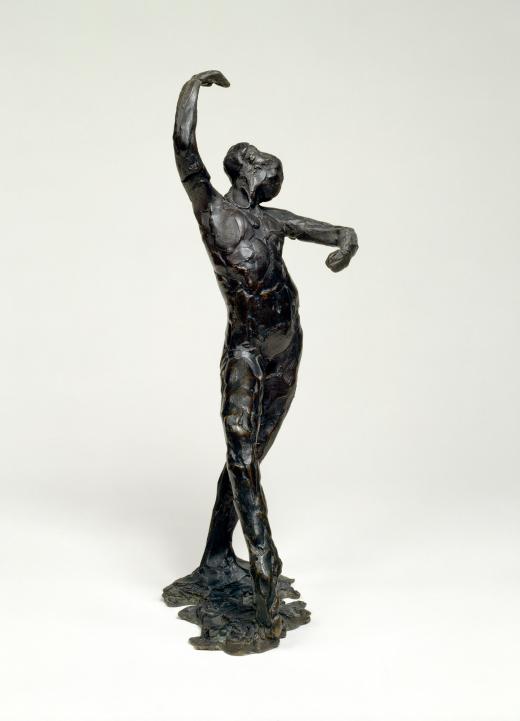IMPRESSIONISM
The Thannhauser Collection played a major role in expanding the range of the Solomon R. Guggenheim Foundation’s holdings to incorporate the immediate precursors to modern art. As prominent dealers in Germany, Switzerland, and France in the first half of the twentieth century, the Thannhauser family organized important group and solo exhibitions featuring French avant-gardists from the late nineteenth century, including Paul Cézanne, Edgar Degas, Édouard Manet, and Pierre-Auguste Renoir. These innovative artists, centered in Paris and associated with the loosely defined group of Impressionists, employed stylistic devices such as loose brushwork in order to impart an illusion of spontaneity. Cézanne’s experiments with form went even further: he departed from the traditional pursuit of reproducing an illusion of real space, and his work increasingly exhibited spatial discontinuity and approached geometric abstraction.
The Impressionists explored the fleeting effects of natural and urban subjects, and realistically portrayed the shifting class structures and mores of French culture. Manet’s Before the Mirror (1876), for example, depicts a courtesan looking into her psyche (mirror) in a state of partial undress. Similar to Manet’s work in its intimacy, Pierre-Auguste Renoir’s Woman with Parakeet (1871) captures a young, upper-middleclass Parisian woman playing with her pet bird. She would have been confined almost exclusively to indoor domestic spaces—like the parakeet to its gilded cage—rather than permitted to move freely about the city with her male counterparts.


